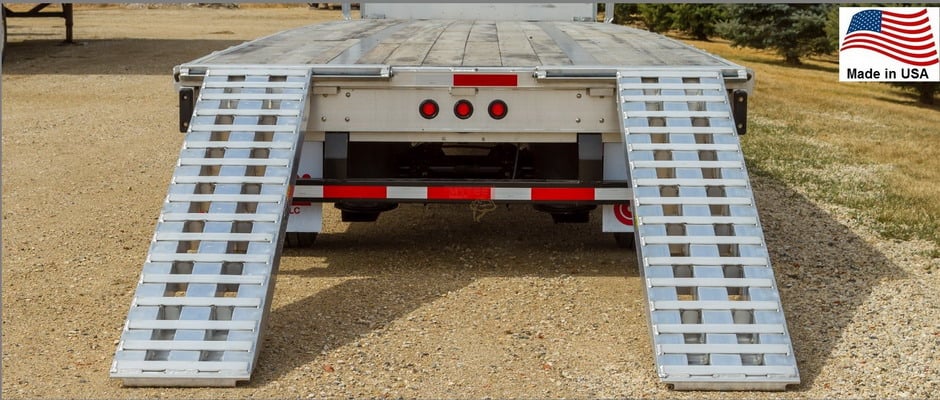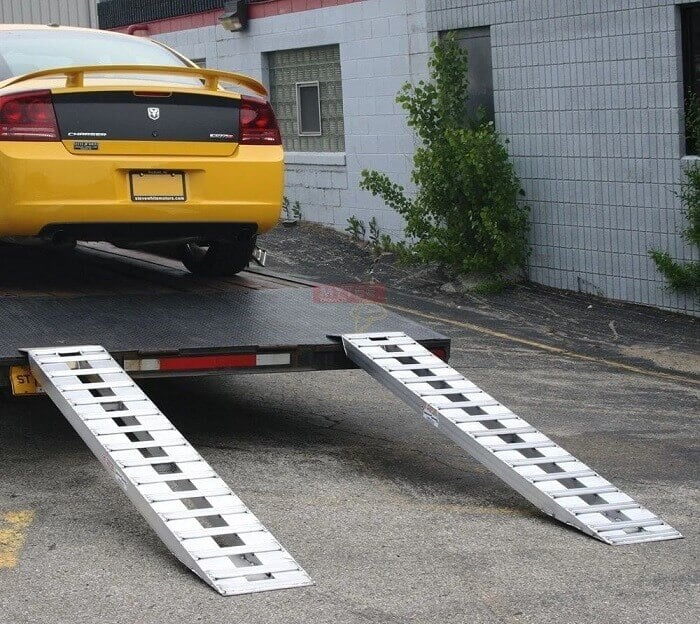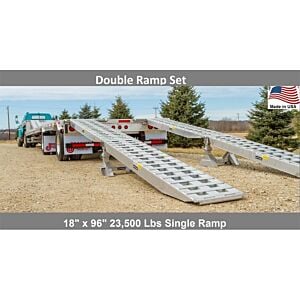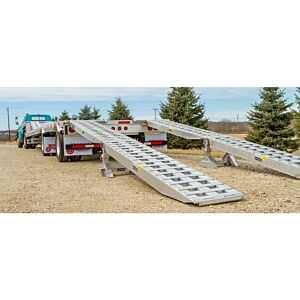Truck drivers with loading ramps experience know that it is all about physics. The laws of physics dictate that it’s easier to roll something up a ramp than lift it straight up. But the same physics that make truck loading ramps so efficient also constitute their greatest weakness. Therefore, it pays to know the physics in order to use loading ramps safely.
Trailer Loading ramps make moving objects to a higher point easier by distributing the weight of the load across a larger area. Furthermore, pushing or pulling an object up a set of ramps requires less work than lifting that same item. Thus, you can get some pretty heavy objects onto the back of an open deck trailer with a pair of inexpensive trailer loading ramps from Mytee Products.

Tips for Using Loading Ramps:
With all of that said, here are some tips for using loading ramps safely:
1. Work on a Level Surface
Whenever possible, you should work on a level surface. Your trailer deck should be parallel with the ground and the ends of the ramps touching the ground should not be lower than the trailer’s rear wheels. A level surface provides for maximum efficiency during the loading process. It also reduces the risks of the load tipping backward or falling off the side of the ramps.
Also Read: Auto Haulers Must-Have Car Hauling Ramps
2. Watch the Load Angle
As efficient as loading ramps are compared to direct lifting, they are not capable of working miracles. Loading can be terribly unsafe if the ramp angle is too high. Therefore, watch the load angle. Keep it as low as possible on every single job.
This might facilitate purchasing new loading ramps if your current set is too short. Also bear in mind that you will need longer ramps and a lower angle for heavier loads. Remember the physics. The key is to get your load up onto the deck with as little work as possible. Load angle influences the amount of required work more than any other factor.
3. Send the Drive Wheels First
It doesn’t matter which direction you load all-wheel drive vehicles in. But if you’re loading a vehicle with only two-wheel drive, send the drive wheels first. This means a front-wheel-drive vehicle goes up the ramp forward; a rear-wheel-drive vehicle goes up in reverse. Again, it is all about physics.
If the drive wheels are to the rear of the vehicle as it’s loaded, those wheels are pushing the load rather than pulling it. This creates a natural pivot point over the axle. Too steep an incline or too much power to the engine could flip the vehicle backward. On the other hand, it’s impossible to flip backward if the power wheels are in the front.
Also Read: How to Use Loading Ramps Carefully in Winter Weather
4. Make Sure Loading Ramps Are Tightly Secured
Even keeping the drive wheels to the front of the load doesn’t eliminate all risk of tipping over. There is a point just after the drive wheels reach the deck where the entire setup is inherently unstable. If ramps are not securely fastened to the back of the trailer, they could slip away and send the load crashing to the ground.
Always make sure your loading ramps are properly secured before you begin loading. What’s more, don’t cut corners here. Loading ramps come with fittings and pins for this very reason – use them for their intended purpose.
Conclusion:
Loading ramps are must-have tools for open deck drivers. If you own a pair, please do right by yourself and your shippers by always using them safely. If you need a pair, Mytee Products has what you’re looking for. We carry a complete line of loading ramps and accessories.
















